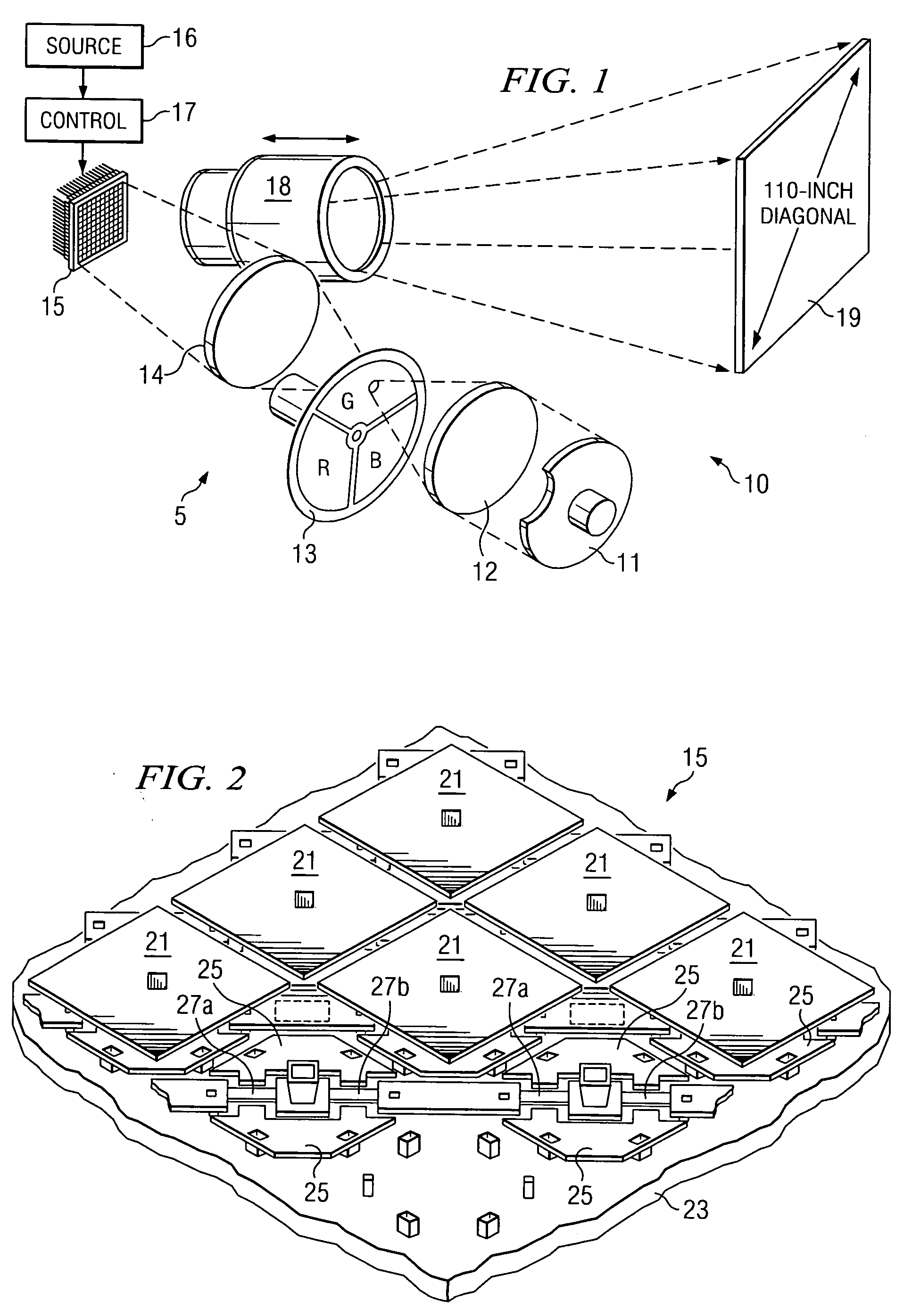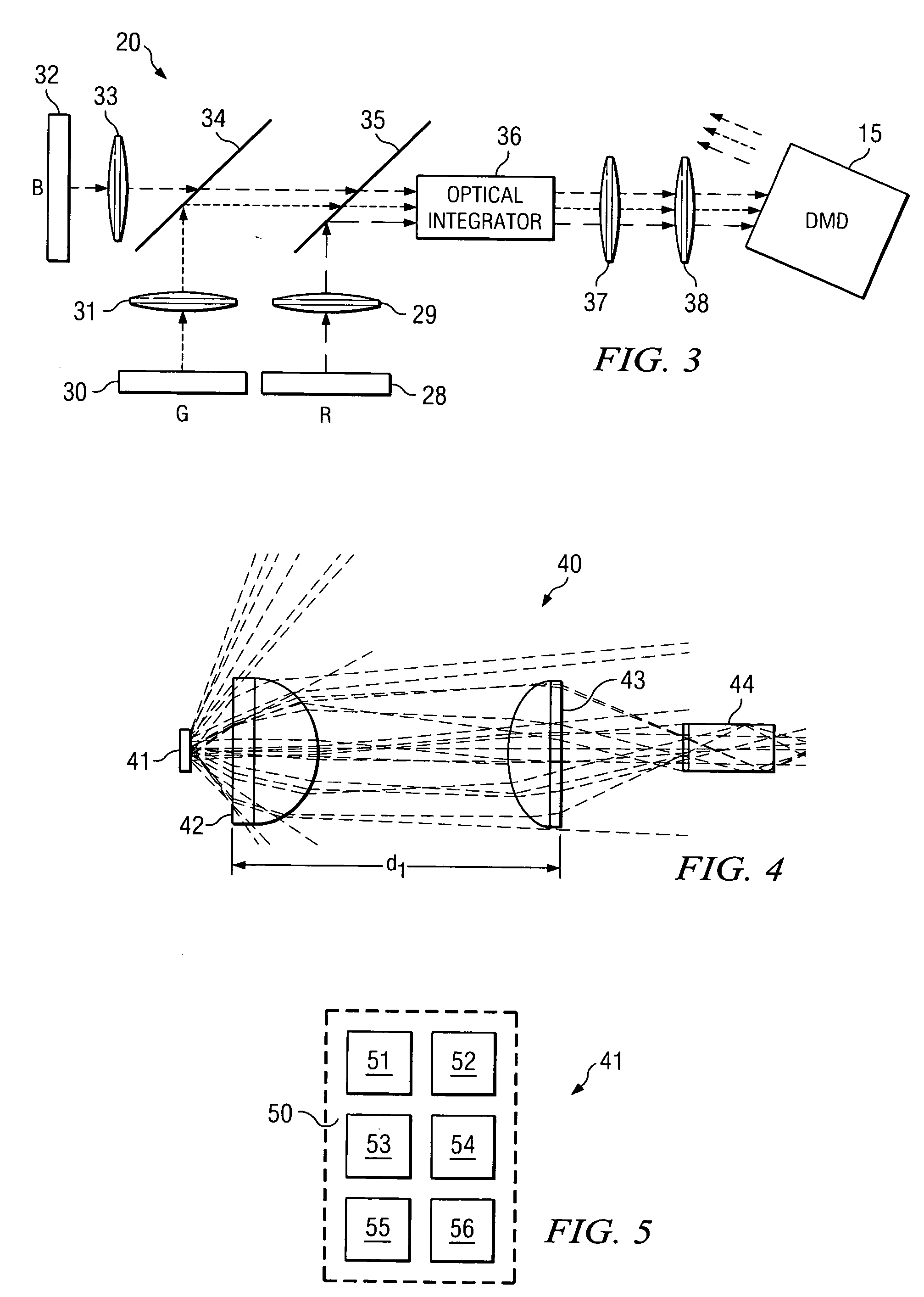Method of combining dispersed light sources for projection display
a technology of dispersed light and projection display, which is applied in the direction of non-linear optics, lighting and heating apparatus, instruments, etc., can solve the problems of difficult routing of electrical power and control (data) connections, limited size, and waste of light energy in display systems
- Summary
- Abstract
- Description
- Claims
- Application Information
AI Technical Summary
Benefits of technology
Problems solved by technology
Method used
Image
Examples
Embodiment Construction
[0035] The making and using of the presently preferred embodiments are discussed in detail below. It should be appreciated, however, that the present invention provides many applicable inventive concepts that can be embodied in a wide variety of specific contexts. The specific embodiments discussed are merely illustrative of specific ways to make and use the invention, and do not limit the scope of the invention.
[0036] The present invention is directed to a method and system advantageously employed for optically combining the light emitted by dispersed light sources, such as multiple LEDs, used in a projection display system. The display system may, for example, produce visual images for a television or high-definition television (HDTV). While preferred embodiments of the present invention will herein be described with respect to such an application, other applications are possible. Any reference to a specific application such an HDTV is therefore intended to be exemplary and not l...
PUM
 Login to View More
Login to View More Abstract
Description
Claims
Application Information
 Login to View More
Login to View More - R&D
- Intellectual Property
- Life Sciences
- Materials
- Tech Scout
- Unparalleled Data Quality
- Higher Quality Content
- 60% Fewer Hallucinations
Browse by: Latest US Patents, China's latest patents, Technical Efficacy Thesaurus, Application Domain, Technology Topic, Popular Technical Reports.
© 2025 PatSnap. All rights reserved.Legal|Privacy policy|Modern Slavery Act Transparency Statement|Sitemap|About US| Contact US: help@patsnap.com



